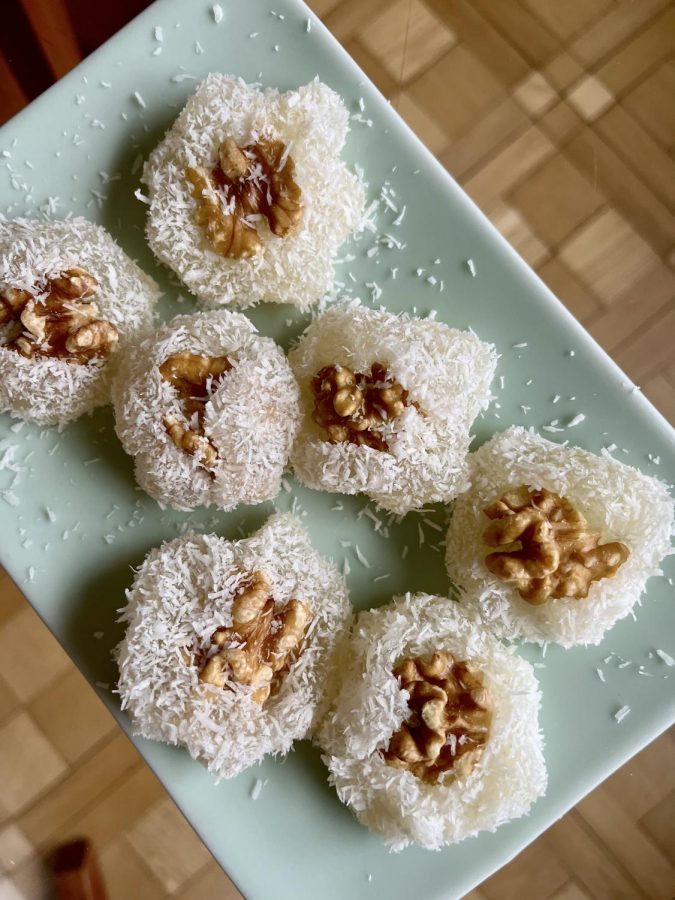Nourbakhsh: I tested out two traditional Persian dessert recipes for Shabe Yalda and the results were delicious
Mitra Nourbakhsh/The Daily Northwestern
Rose-flavored Baslogh. This Thanksgiving, I tried making this Persian sweet, often served during Shabe Yalda along with pomegranate, watermelon, dried fruit and nuts.
December 1, 2022
Don’t read this if you’re hungry, because we’re talking holiday desserts. I’ve made Christmas cookies and babka before, but this holiday baking season I wanted to try something the Persian side of my family would definitely embrace: Shabe Yalda desserts.
Shabe Yalda is a Persian celebration of the longest night of the year. Families cozy up around a heated table with sweets, fruit and hot tea, staying up as late as possible and reading poetry to make it through the darkness and celebrate the coming of longer days. My family has half-heartedly celebrated Yalda for years, but thanks to the lack of Persian grocery stores in my hometown and the limits to how much of my grandmother’s suitcase can be dedicated to food, we’ve never had a good spread of sweets.
This year, I decided to attempt a few traditional Shabe Yalda desserts myself.
First up: baslogh, a gelatinous sweet flavored with rose water, rolled in shredded coconut and garnished with walnut.
I looked through just about every baslogh recipe I could find on the internet, leading me to instructional gems like, “You should melt the starch in cold water and batter it well to avoid nods” and revelations including “Moreover, like all other sweets, it has sugar.”
Once I found an intelligible recipe, the baslogh were surprisingly easy to make. I boiled sugar and water with a cornstarch mixture until it formed a paste, which I rolled into balls and coated in coconut. It took a few tries to get the hang of it, but once I did the sweets came together quickly.
Although I liked their subtle flavor, the baslogh were a bit too sweet to have on their own but paired perfectly with Assam tea. I used less rosewater than the recipe required, which was a good move. Any more, and the sweets would have tasted like soap. Overall, I’d give my baslogh a 8/10: good, but not incredible.
My next target was sohan: think peanut brittle with pistachios instead of peanuts. Sohan is buttery, pistachio-ey and saffron-ey — and, as I would soon learn, absolutely delicious.
I added flour, butter, sweeteners, and spices to a saucepan one at a time and stirred vigorously. Once the mixture thickened and became smooth with a toasted smell, I poured it onto a parchment-covered baking sheet and sprinkled it with pistachios.
After waiting for the sohan to cool, I cracked it into pieces and then, finally, tasted it. Delicious. Buttery and nutty, the whole plate was almost gone within an hour — my family barely managed to save one piece for my brother to try when he got home from school.
Sohan gets a solid 10/10, and the recipe needs no modifications. Relatively quick and easy to make, it is worth every second.
I had a blast trying these desserts, and things didn’t go nearly as badly as I had expected. These recipes made for a Thanksgiving break well spent.
Email: [email protected]
Twitter: @mitralouw
Related Stories:
— Crawford: Here’s why you should start baking


